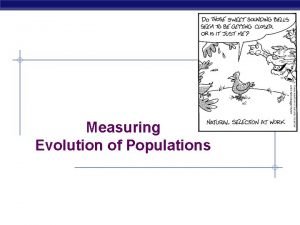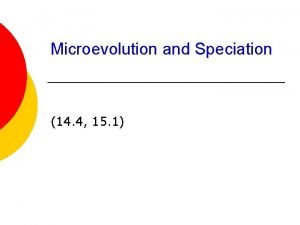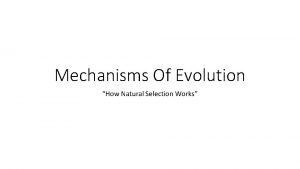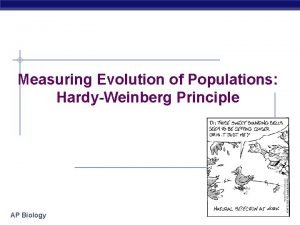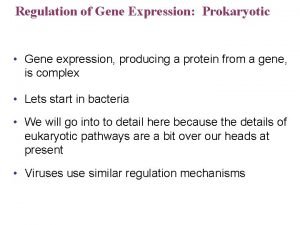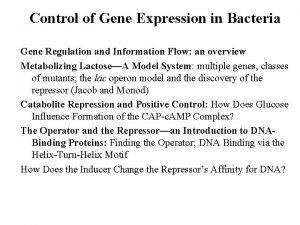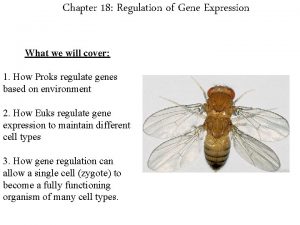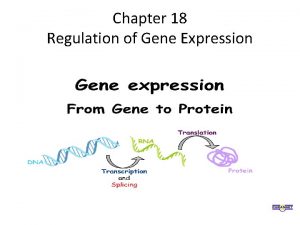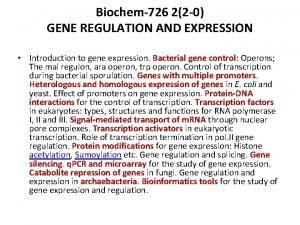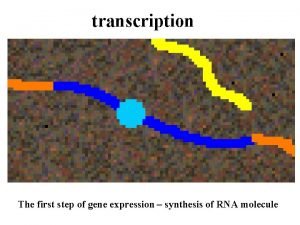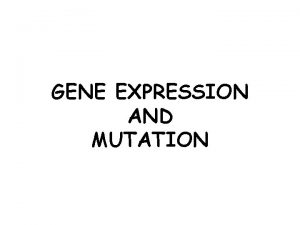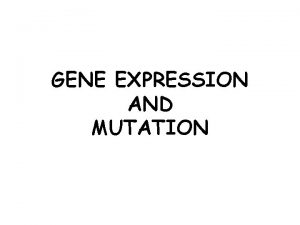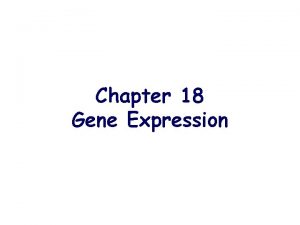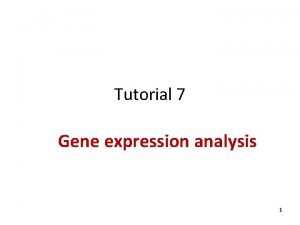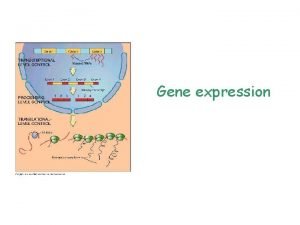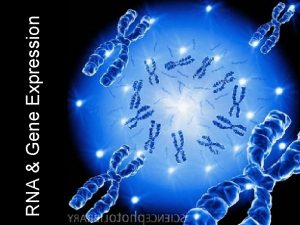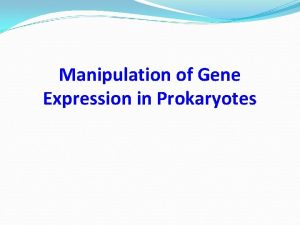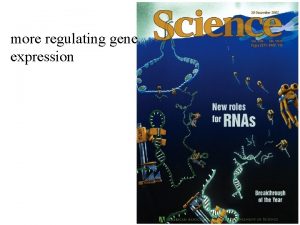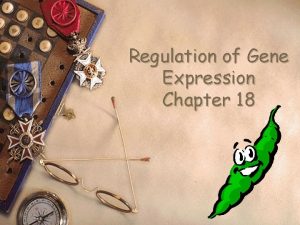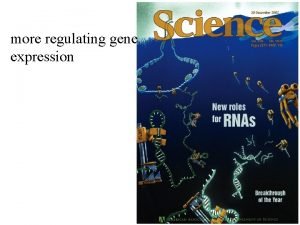Genetic Engineering and Gene Expression Genetic Engineering 1

















- Slides: 17

Genetic Engineering and Gene Expression

Genetic Engineering 1. The following are fields of science that use DNA technology such as Genetic Engineering: C. S. I. Genetically modified crops Pharmaceuticals (ie Insulin) Paternity Tests

Genetic Engineering 2. Bacteria have a natural defense against these viruses called restriction enzymes. Restriction enzymes cut up the viral DNA at certain sequences.

Genetic Engineering 3. Each restriction enzyme only recognizes and cuts a specific nucleotide sequence on DNA. It will cut the DNA each time it encounters it. 4. The single stranded ends that result from the cutting are called “sticky ends. ” These sticky ends will bond with complementary bases on other DNA molecules with the same sticky ends.

DNA Fingerprinting 5. Gel Electrophoresis is the process of sorting DNA fragments according to size.

DNA Fingerprinting 6. DNA must first be cut into fragments before being loaded into a gel in order to sort them by size.

DNA Fingerprinting 7. Each suspect’s DNA must be cut with the same restriction enzyme.


Recombinant DNA 8. Some common industries that use Recombinant DNA Technology: Genetically modified crops Pharmaceuticals (ie Insulin)

Recombinant DNA 9. Both the plasmid and target gene were cut using the same restriction enzyme. 10. Since the sticky ends would easily bond together, the target gene was spliced into the plasmid DNA.

Recombinant DNA 11. It was the GFP protein that was produced through Transcription and Translation that actually glowed. DNA does not glow.

Gene Expression No Sugar 12. The bacteria grown without sugar did not glow because the GFP protein could not be produced. A repressor protein was blocking transcription of the gene.

Gene Expression 13. Gene expression is the activation of a gene that results in transcription and the production of m. RNA. Only a fraction of any cell’s genes are expressed at any one time.

Gene Expression 14. Repressor proteins are coded for by regulator genes and these proteins inhibit genes from being expressed. They attach and physically block the advancement of RNA polymerase.

Gene Expression 15. An Inducer is a molecule that initiates gene expression by binding to the repressor protein causing it to detach. RNA polymerase can then advance to the structural genes.

Lac Operon Video

Gene Expression No Sugar 16. Sugar was the inducer in the p. Glo lab by causing the repressor to detach, allowing the transcription of the GFP gene to occur.
 Chapter 17 gene expression from gene to protein
Chapter 17 gene expression from gene to protein Genetic effects on gene expression across human tissues
Genetic effects on gene expression across human tissues How is genetic drift different from gene flow
How is genetic drift different from gene flow What is gene flow and genetic drift
What is gene flow and genetic drift Gene flow vs genetic drift
Gene flow vs genetic drift Gene flow vs genetic drift
Gene flow vs genetic drift Gene by gene test results
Gene by gene test results Gene structure prokaryotes vs eukaryotes
Gene structure prokaryotes vs eukaryotes Macroevolution vs microevolution
Macroevolution vs microevolution Mechanisms of evolution
Mechanisms of evolution Genetic drift vs gene flow
Genetic drift vs gene flow Operon lac
Operon lac Gene expression:
Gene expression: Regulation of gene expression
Regulation of gene expression Chapter 18 regulation of gene expression
Chapter 18 regulation of gene expression Chapter 18 regulation of gene expression
Chapter 18 regulation of gene expression Regulation of gene expression
Regulation of gene expression טרנסלציה
טרנסלציה



